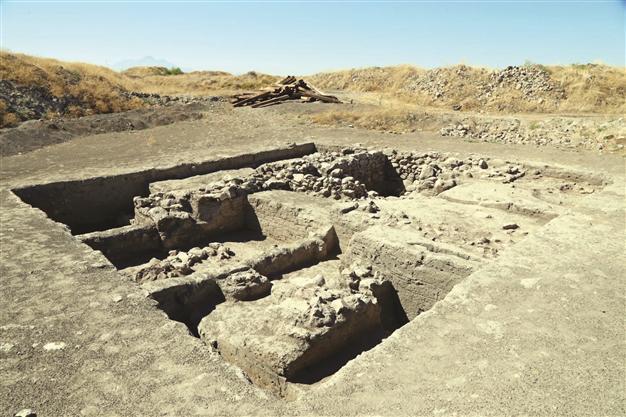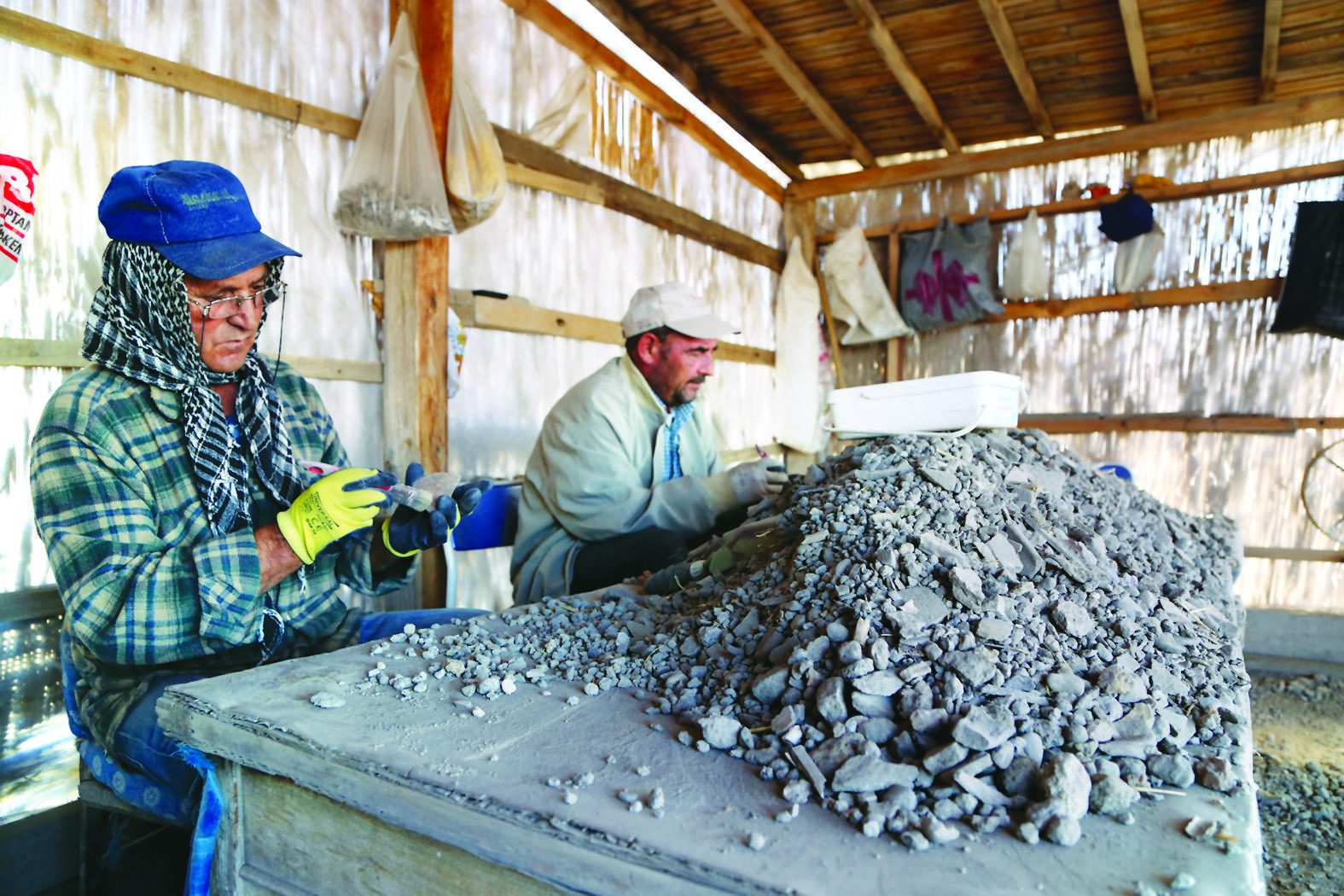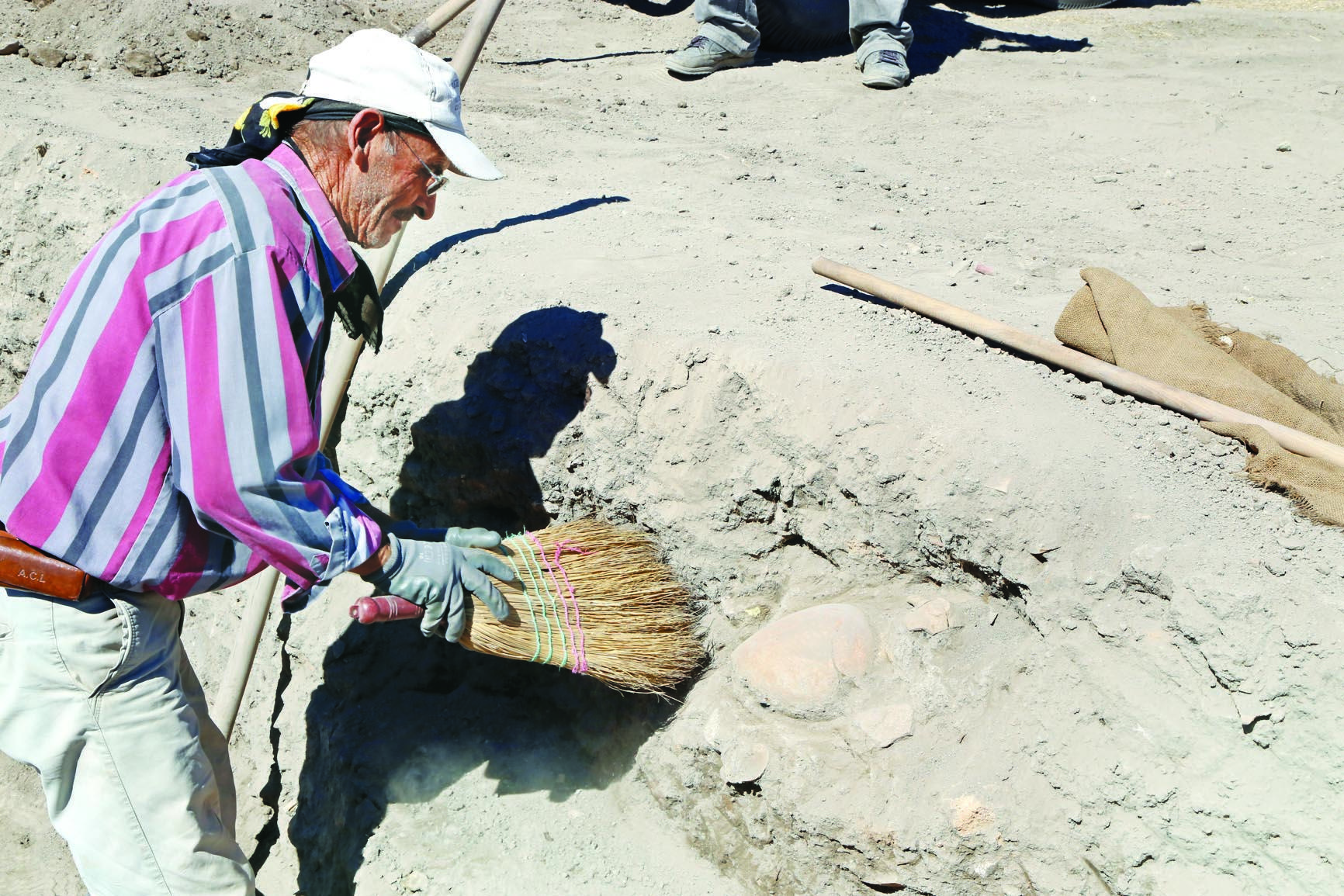Excavations to shed light on ancient trade
KAYSERİ - Anadolu Agency

AA Photos
New excavation work started on the Kültepe Kaniş/Karum mound, located in the central Anatolian province of Kayseri, will shed light on the early stages of trade. The work, coordinated by Japanese archaeologist Professor Ryoichi Kontani, aims to uncover data about ancient international trade.Kontani said since 1948, excavations in Kültepe had been carried out in a field known as the palace. The team has recently started works in the settlement field, located 300 meters north of the palace.
“Our goal is to reach the first eras when trade started 6,000-7,000 years ago in Kültepe. We have so far reached 4,500 years ago. This is the basement of the places where people lived. We discovered a furnace from 4,500 years ago… We also found the pieces of an idol made of marble and known as the Kültepe Idol. What is interesting to us is that those idols were found inside the sanctuaries in the palace field. Finding them 300 meters away from the palace shows us that the Kültepe Idol had religious meaning not only for upper-class people but also lower-class people,” said Kontani.

Trade hub of the Middle East
Kontani said that there were rumors that trade dated back 6,000 years in Kültepe but it has not been proved. “We will try to find evidence [for this claim] in this work,” he said.
He said Kültepe was trade hub of the Middle East in the past. “Since this place was the transition zone for civilizations, its history might go back to earlier times than expected. At the first stage, we aim to reach 6,500-7,000 years ago. But we will continue working in this level because this place was home to many civilizations, one after the other. We see the traces of a different civilization in each layer. This means that Kültepe was not only the trade hub of Anatolia but of the Middle East,” added Kontani.
He said that they had been working with a team of four people in a 30-square-meter area. “We keep the area narrow because we want to reach older ages within a shorter time. But we will start excavations in a wider field with a larger group of people in the coming years,” he said.

















